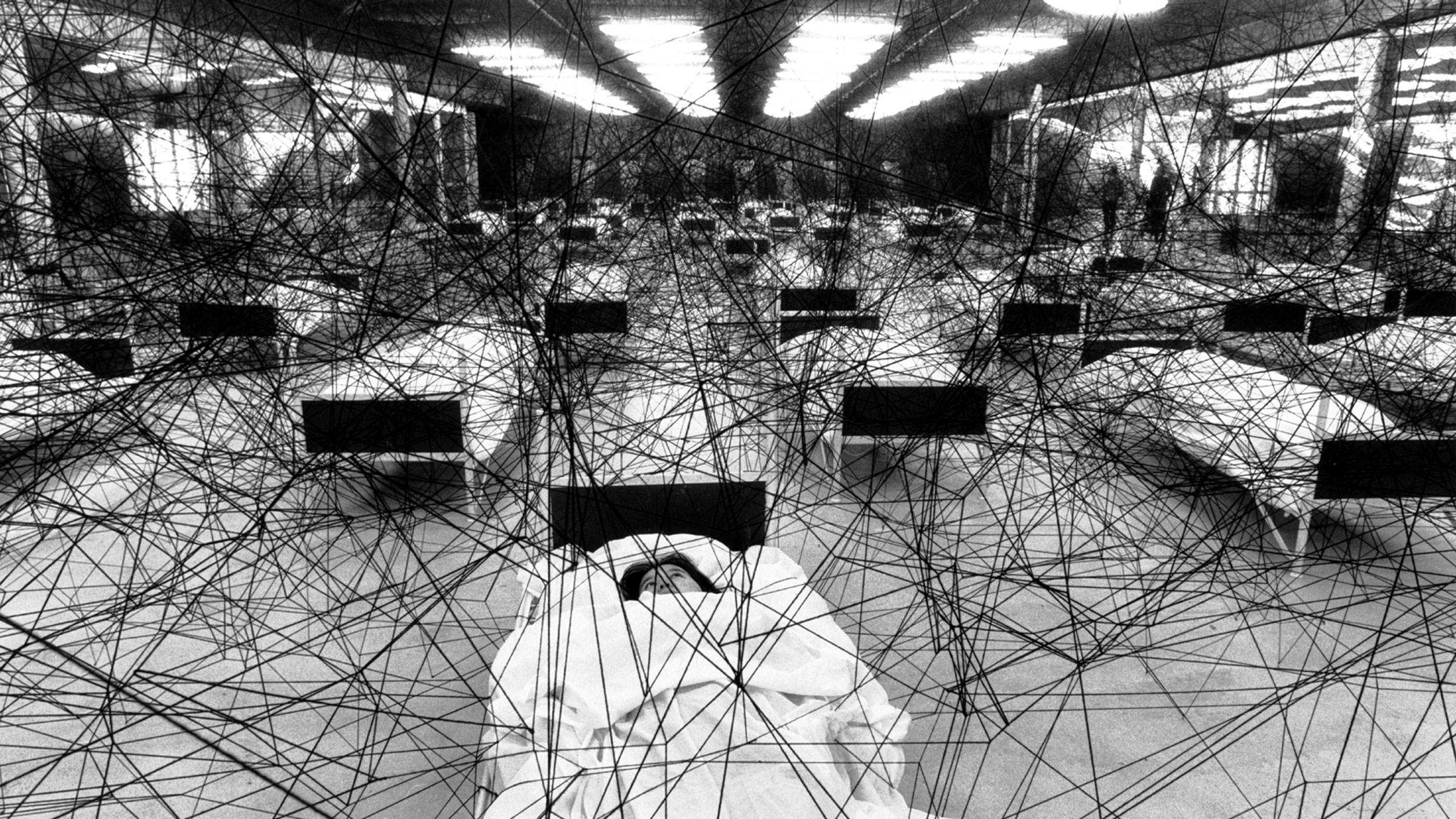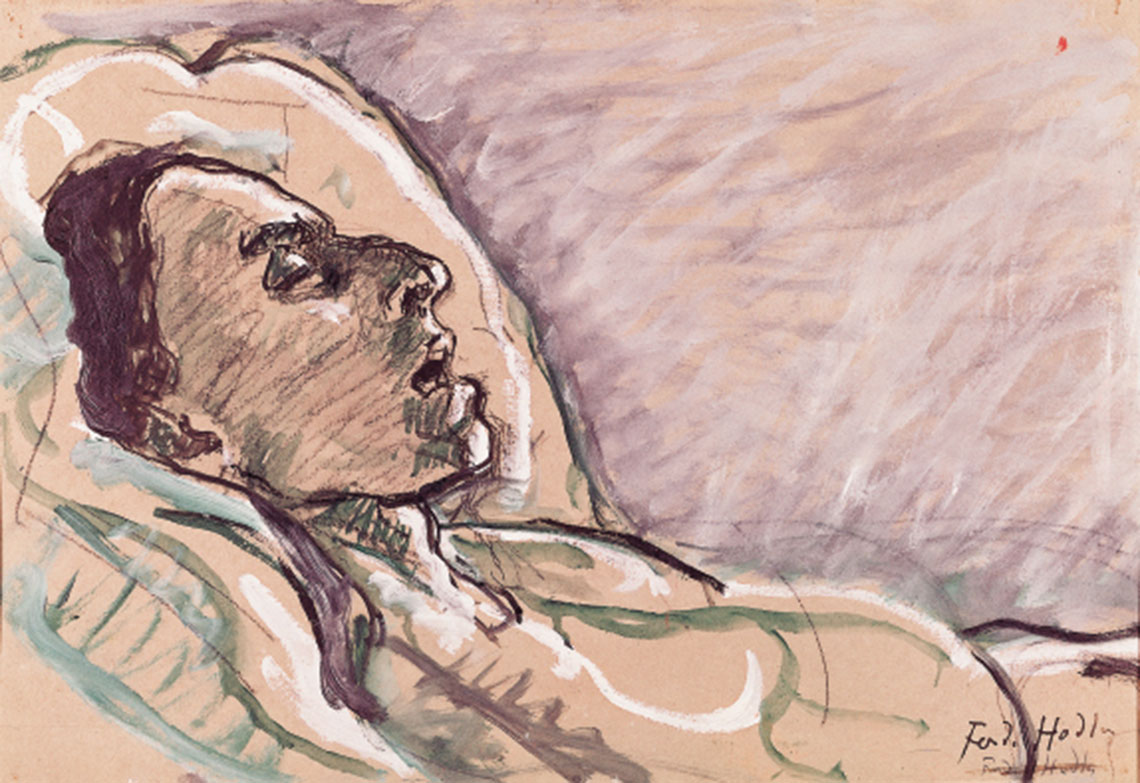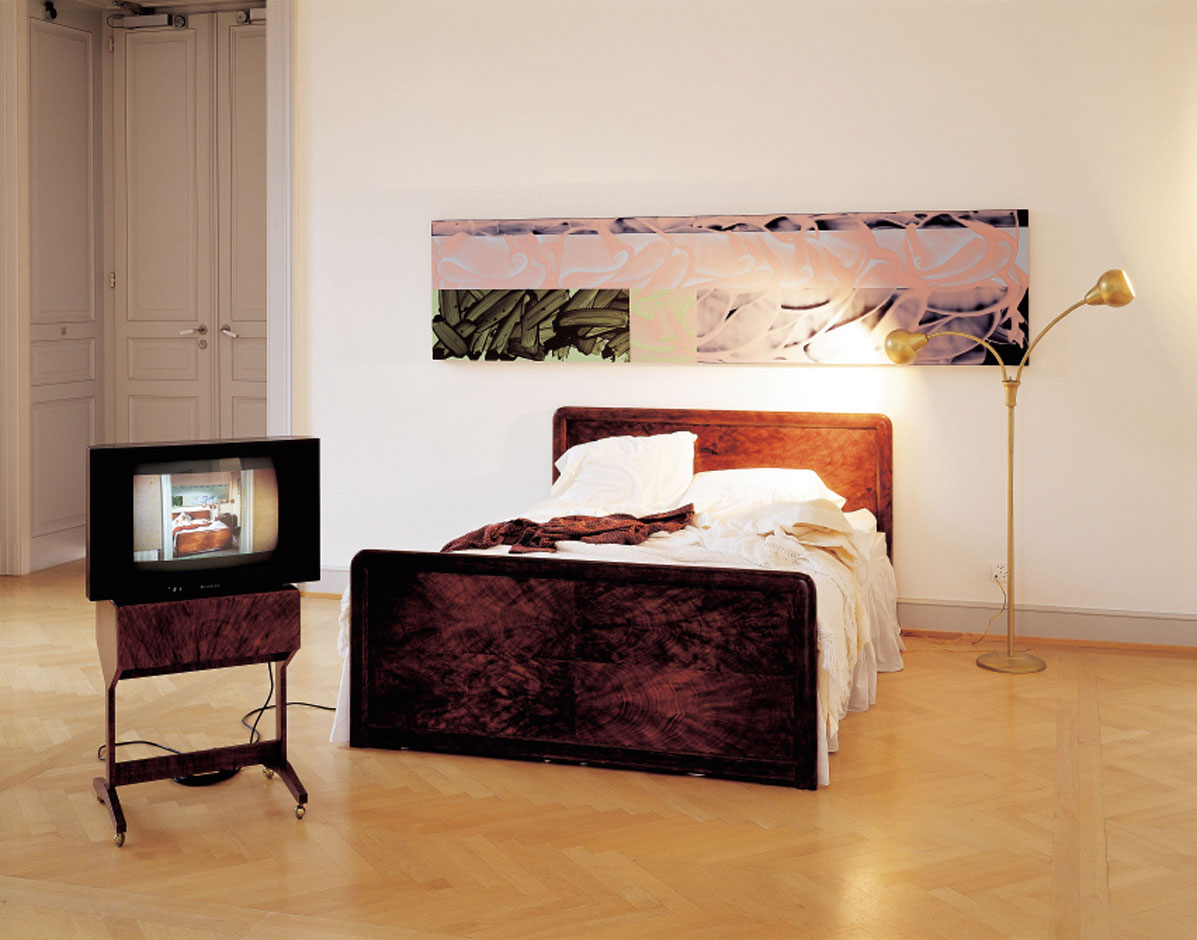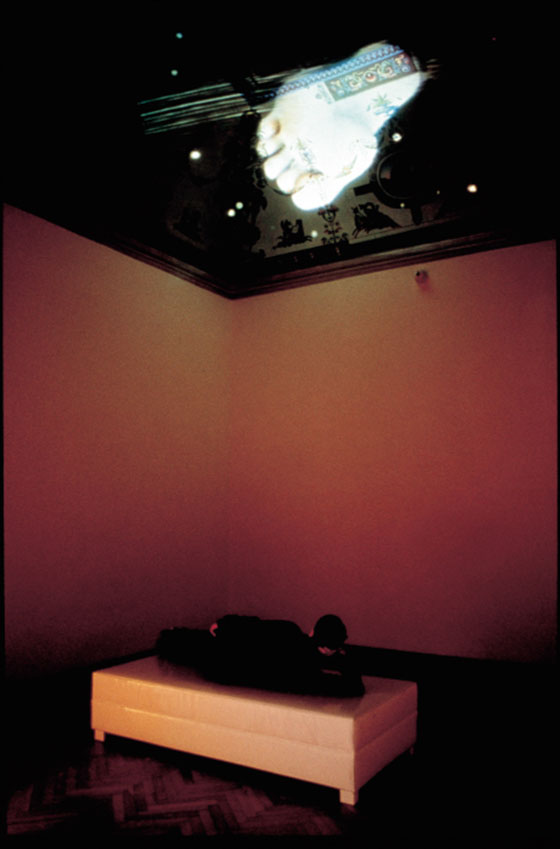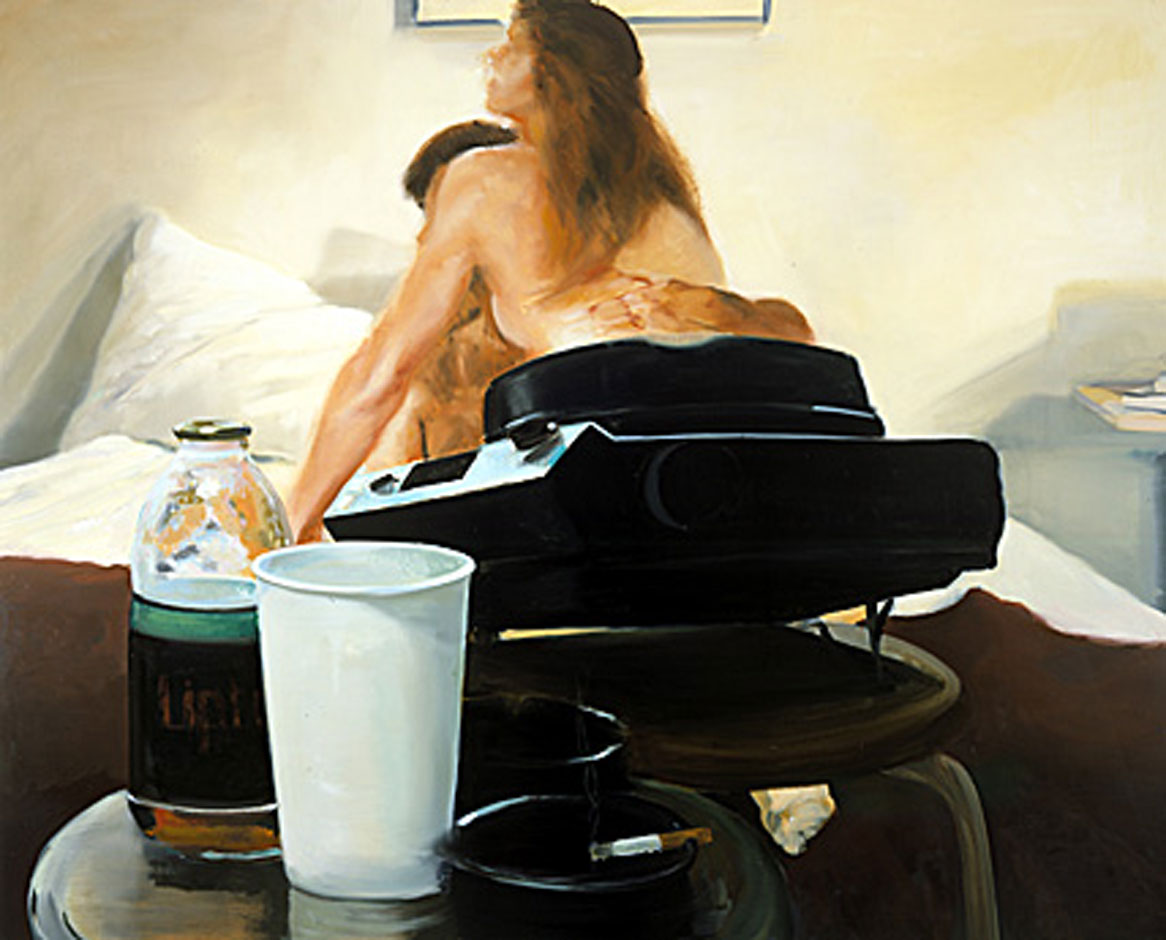Another World
Zwölf Bettgeschichten
With Louise Bourgeois, Eric Fischl, Robert Gober, Mona Hatoum, Ferdinand Hodler, Rebecca Horn, Ilona Németh, Yoko Ono and John Lennon, David Reed, Pipilotti Rist, Chiharu Shiota, Roman Signer, Hannah Wilke
The bed is a sanctuary of rest, of sleep, of recreation; it is the place for pleasure and love, but also for illness and death. We spend a third of our lives in bed; no other surroundings are more familiar to us or give us the same comfort and security. Yet it is there that we also take the longest trips, have the most profound experiences, and encounter new worlds where supreme happiness and the deepest despair are equally at home. The bed is a site of transition, where the human life cycle begins and ends, where we cross the boundaries of our lives.
As an object laden with multilayered and also contradictory meanings, the bed becomes a welcome artistic motif. It stands for intimacy and also charts a territory of power. Its presence in a work of art exposes the private and intimate to public scrutiny. In us as viewers it evokes memories, releases emotions, but also exerts a physical attraction.
Both the shape of the bed as well as what we do in it are defined by horizontality. We lose our upright position, expose our entire physical length, inscribe ourselves into the earth as it were, and surrender to a greater whole. The horizontal position forces us to relinquish control over our own bodies and the ability to survey our surroundings. An unsettling tension results not only between relief and vulnerability, but also between power and helplessness.
An undercurrent of tension between the sexes marks Eric Fischl’s paintings (*1946), while Ilona Németh’s (*1963) bed becomes the symbol of both the beloved and the abused female body. The bed is also the point of departure or the vehicle for journeys into dream worlds, which may be claustrophobic as in Chiharu Shiota’s installation (*1972) or of cosmic dimensions as in the work of Pipilotti Rist (*1962). «I need my memories, they are my documents»: these are the words Louise Bourgeois (*1911) embroidered on a mail bag lying on the bed in one of her installations. The night shuts out visible reality and gives free rein to memory, which in turn evokes the reality of past experiences. Three cells of the 90s, an early painting, a few prints, as well as a competely new fabric piece form a small, self-contained group of works within the exhibition.
Libyan-British artist Mona Hatoum (*1952) and American artist Robert Gober (*1954) also play with the high emotional potential and stored memory of everyday objects. The materials of their objects themselves become purveyors of meaning.Further, Yoko Ono and John Lennon, David Reed (*1946), Rebecca Horn (*1944) and Roman Signer (*1938) invite us to join them on expeditions into the world of the late 70s, the world of the silver screen, and the world of sweet and disquieting dreams.
The only historical excursion in the exhibition takes us to Ferdinand Hodler (1853–1918). His cycle depicting his sick and dying lover, Valentine Godé-Darel, with its increasingly oppressive horizontal pull, is confronted with the radical self-portraits of the American artist Hannah Wilke (1940–1993), deployed as weapons in the battle against cancer, eloquent testimony to a will to live and an indomitable hope, and at the same time the expression of a deliberate artistic attitude that exploits the means of provocation, irony, and ambiguity.
